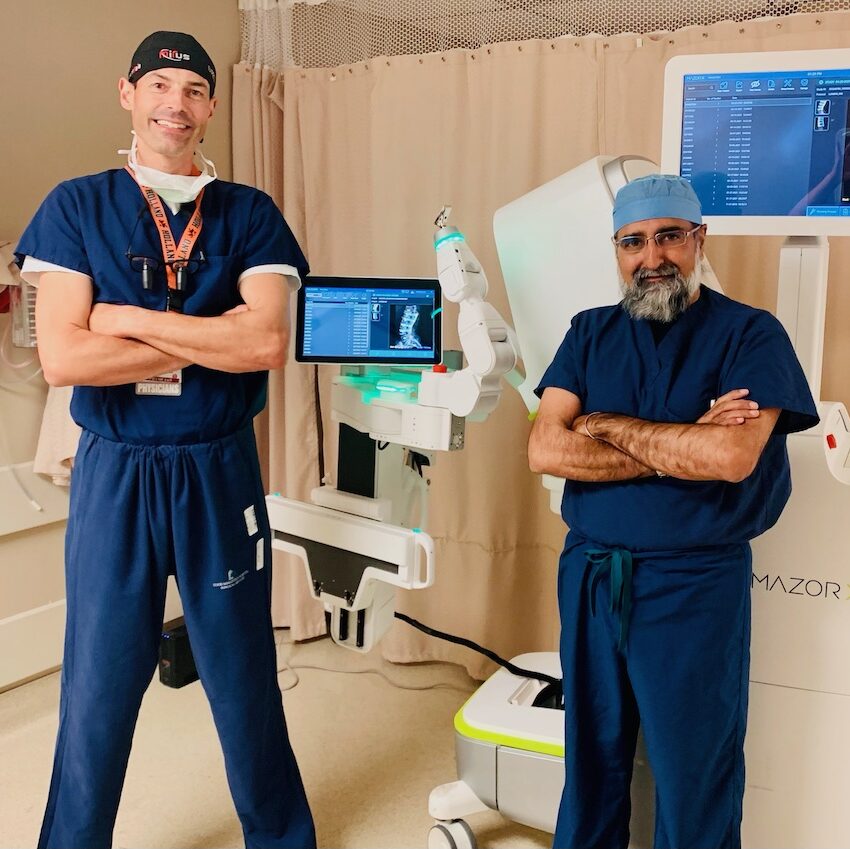A Review of Spine Problems That Often Cause Surgical Therapies
Back conditions such as herniated discs, spinal constriction, and degenerative disc illness regularly necessitate medical treatments when conventional treatments fall short to alleviate consistent signs and symptoms. Recognizing the subtleties of each condition and the matching medical options, such as discectomy or spinal combination, is vital for efficient monitoring.
Herniated Discs
Although many people with herniated discs might discover alleviation through conventional therapies, surgical treatment ends up being a necessary consideration when signs and symptoms linger or intensify - best spine surgeons in st louis mo. A herniated disc occurs when the soft inner gel of a spinal disc protrudes via its external layer, possibly pressing nearby nerves and leading to pain, numbness, or weak point in the extremities
Conventional administration normally consists of physical therapy, discomfort medications, and corticosteroid injections, which aim to minimize swelling and enhance feature. Nonetheless, in cases where these techniques stop working to minimize devastating signs, surgical choices may be explored.
The most usual surgical procedure for herniated discs is a discectomy, which entails the removal of the herniated part of the disc to eliminate stress on the influenced nerve origin. In a lot more severe instances, back combination may be required to maintain the impacted vertebrae.
Individuals are suggested to talk about the possible dangers and advantages of surgery with their healthcare company to make an informed decision. Eventually, the objective of any medical treatment is to recover function, alleviate pain, and improve total quality of life for people dealing with herniated discs.
Spine Constriction
Spinal stenosis takes place when the rooms within the back slim, bring about enhanced pressure on the back cable and nerves. This condition can create in various areas of the spine, consisting of the lumbar and cervical areas, often as a result of age-related changes, such as degenerative disc illness, arthritis, or enlarging of ligaments.
Patients with spine stenosis might present with symptoms that consist of pain, feeling numb, prickling, or weakness, primarily in the legs or arms. These signs can be intensified by activities that entail standing or walking, frequently leading individuals to look for relief through traditional treatments like physical therapy, drugs, or epidural steroid injections.
Nonetheless, when these non-surgical interventions fall short to give appropriate relief, medical options may be taken into consideration. Typical operations for back constriction include laminectomy, which entails the elimination of part of the vertebra to ease stress, and spinal combination, which stabilizes the afflicted location. The choice to pursue surgical procedure is usually based upon the intensity of signs, the level of functional disability, and the overall health and wellness of the individual. Motivate medical diagnosis and monitoring are critical to stop additional neurological concession and enhance quality of life.
Spondylolisthesis
Spondylolisthesis takes place when one vertebra slips ahead over one more, bring about misalignment of the spinal column. This problem can arise from various elements, including genetic problems, trauma, or degenerative modifications in the spinal column. It is most generally observed in the back region, particularly at the L4-L5 and link L5-S1 degrees.

When non-surgical approaches stop working to relieve signs or when significant nerve compression is existing, surgical treatment might be required. Surgical alternatives can consist of back combination or decompression treatments, intended at restoring alignment and alleviating neurological signs.
Degenerative Disc Condition

People with DDD frequently experience pain that might radiate to the legs or arms, depending upon the impacted area of the back. The condition can be identified with a combination of scientific analysis, imaging studies, and individual background. Therapy alternatives typically start with conservative measures, including physical therapy, pain monitoring, and way of life adjustments. Nevertheless, when these approaches stop working to offer appropriate alleviation, medical treatments may be taken into consideration.
Surgical options for DDD might include back combination or synthetic disc replacement, targeted at stabilizing the influenced segment and alleviating discomfort (best spine surgeons in st louis mo). Eventually, the selection of treatment is individualized, considering the seriousness of the condition, individual wellness, and way of life variables
Back Growths

Spinal tumors can arise from different aspects, including hereditary tendency, environmental impacts, and pre-existing clinical conditions. Individuals may provide with a range of symptoms, consisting of localized discomfort, neurological shortages, weak point, or modifications in bowel and bladder feature, depending on the tumor's dimension and location.
Surgical intervention might be necessitated to ease signs and symptoms, acquire a biopsy, or get rid of the lump entirely. The goal of surgical treatment is frequently to decompress neural aspects read what he said and stabilize the spine. Early discovery and intervention are vital for enhancing end results in clients with spinal lumps.
Final Thought
In summary, back problems such as herniated discs, spinal constriction, spondylolisthesis, degenerative disc condition, and back lumps often require medical treatment as a result of their prospective to create significant pain and useful problems. While traditional therapies might use short-term relief, surgical choices come to be important when symptoms aggravate or linger. Prompt medical diagnosis and intervention play a critical role in bring back function and improving the lifestyle for damaged individuals, emphasizing the significance of comprehensive back care.
